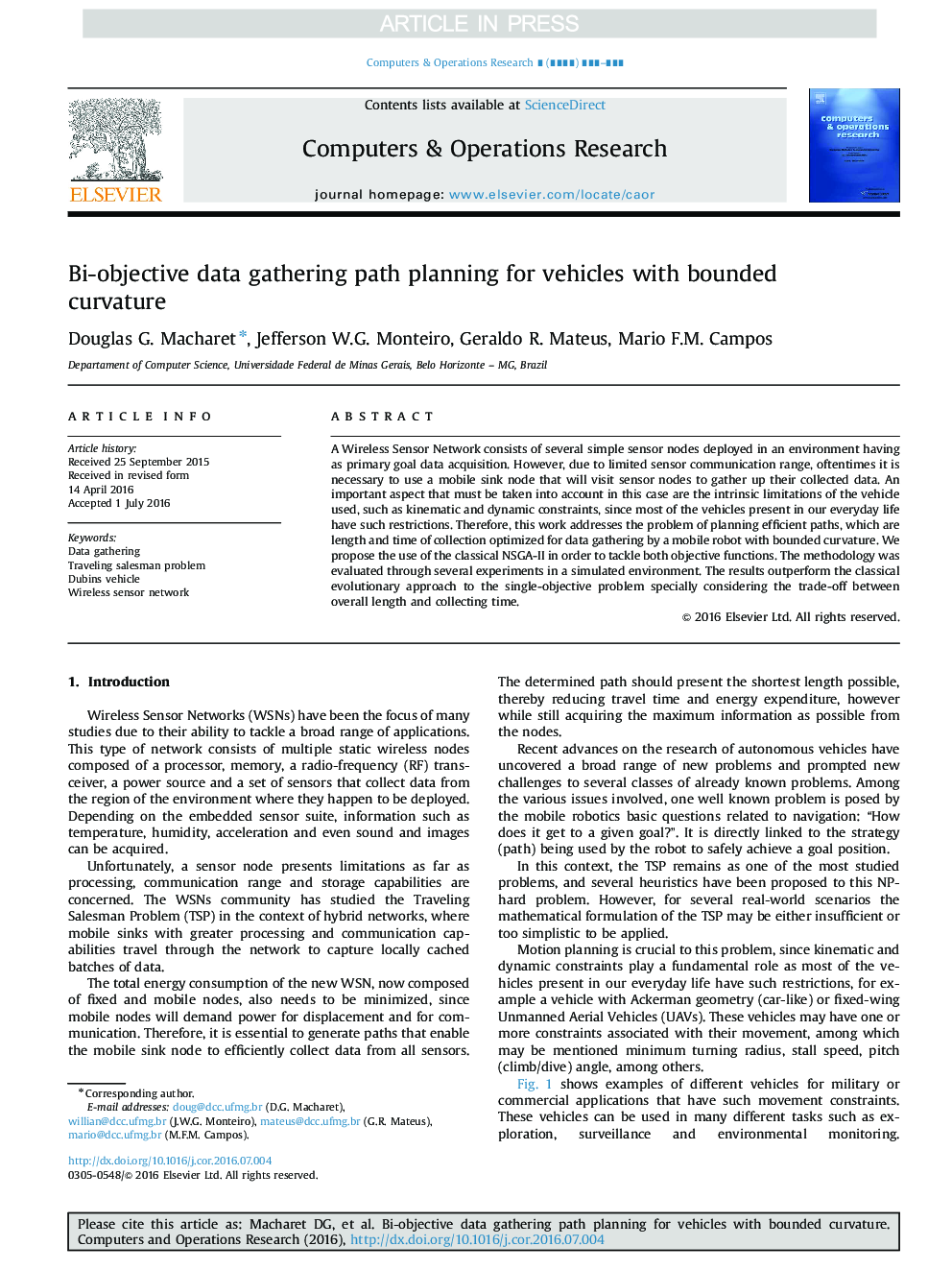| Article ID | Journal | Published Year | Pages | File Type |
|---|---|---|---|---|
| 4958941 | Computers & Operations Research | 2017 | 10 Pages |
Abstract
A Wireless Sensor Network consists of several simple sensor nodes deployed in an environment having as primary goal data acquisition. However, due to limited sensor communication range, oftentimes it is necessary to use a mobile sink node that will visit sensor nodes to gather up their collected data. An important aspect that must be taken into account in this case are the intrinsic limitations of the vehicle used, such as kinematic and dynamic constraints, since most of the vehicles present in our everyday life have such restrictions. Therefore, this work addresses the problem of planning efficient paths, which are length and time of collection optimized for data gathering by a mobile robot with bounded curvature. We propose the use of the classical NSGA-II in order to tackle both objective functions. The methodology was evaluated through several experiments in a simulated environment. The results outperform the classical evolutionary approach to the single-objective problem specially considering the trade-off between overall length and collecting time.
Related Topics
Physical Sciences and Engineering
Computer Science
Computer Science (General)
Authors
Douglas G. Macharet, Jefferson W.G. Monteiro, Geraldo R. Mateus, Mario F.M. Campos,
